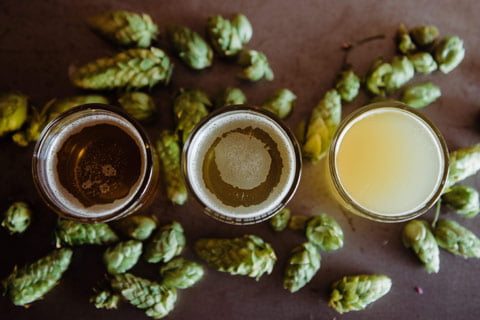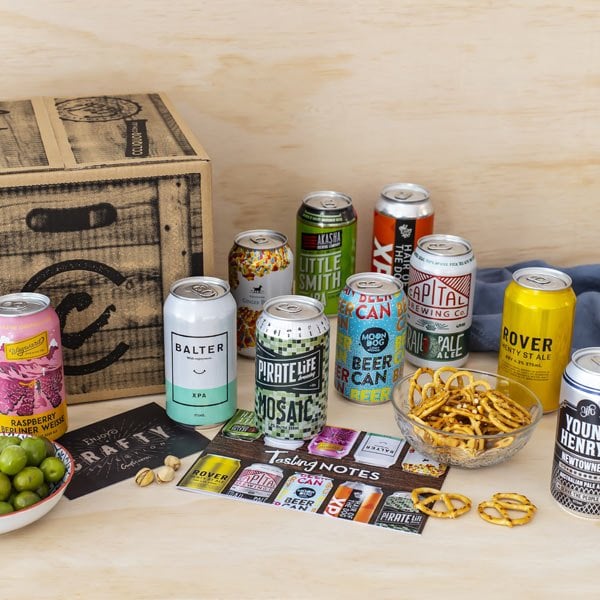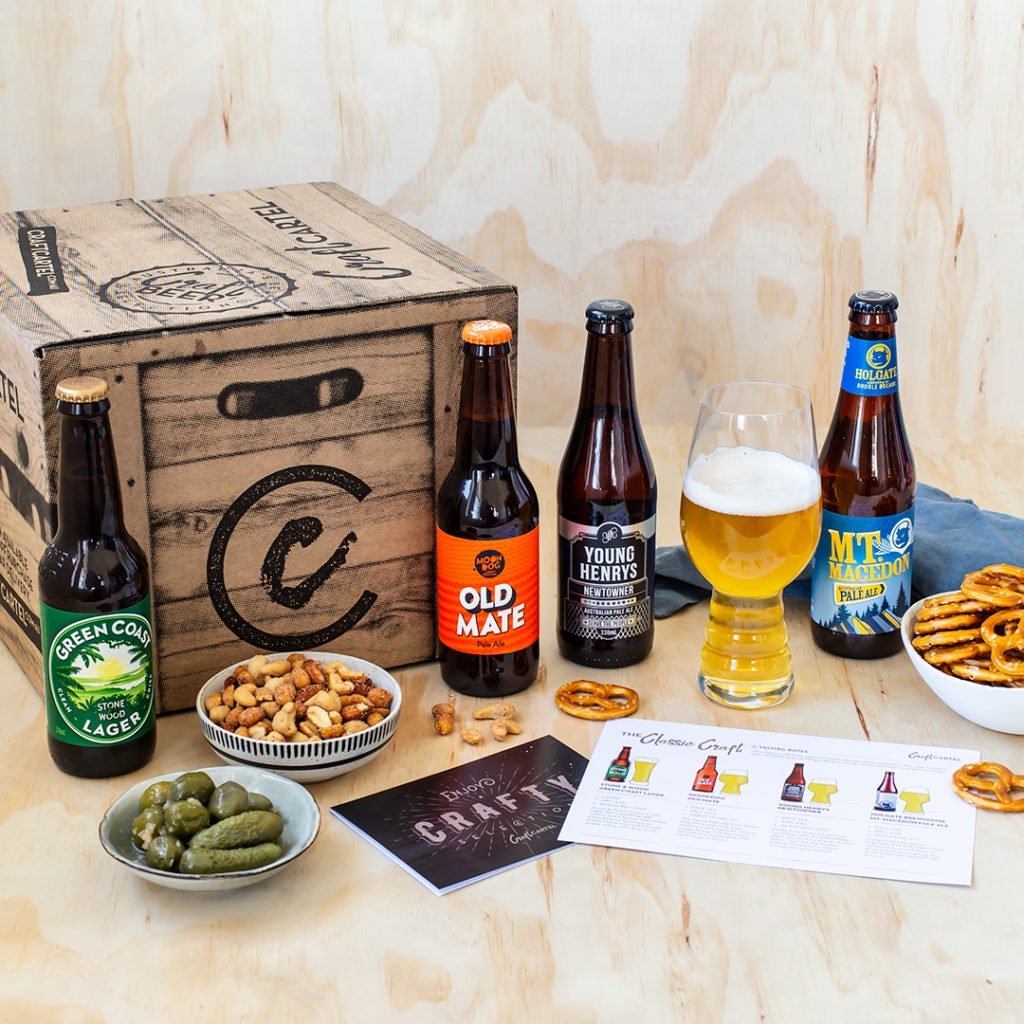
Craft Beer And Brewing Terms
Wanting to evolve from a simple beer drinker into a beer geek? Well we are back again to help you on your way to becoming a craft beer expert and finally find out who this Brett fella is. Last month we discovered the fundamental styles of beer and how they differ, but now let’s take a deeper look into the brewing process and find out how we landed at over 80 different styles… or if you are to believe the brewers association, 158 styles! The true number will probably never be known, simply because people just keep brewing more beer. Now that is a lot of sampling to do.
Beer is basically four ingredients, barley (or sometimes another grain like wheat) water, hops and yeast, which undergo a period of fermentation. As for the rest of the lingo you should know…
Malt – or malting, is a key process in the production of beer. Barley is unable to ferment in its natural state so undergoes a process of soaking, germinating and then heating to produce malted barley, which can then go on to be fermented.
Kilning – is the heating and drying of the barley. This process once used charred wood, which produced a dark malt and in turn a dark beer. However modern techniques allow us to dry at a relatively low, clean heat producing pale malt, which, you guessed it, produces pale beers.
Grist – The malt, or blende of malts are milled or crushed into grist, so that the sugars can be extracted.
Mashing – The grist is then mixed with hot water in a mash turn, which activates the malt enzymes and converts the starches from the malt into fermentable sugars. Mashing is basically a brewer’s term for making a giant pot of malt tea.
Wort – Once the hot tea is brewed, or should I say mash is done mashing, the sweet liquid is separated from the husks using a lauter tun. This liquid is the beginning of beer and is known as wort. Don’t be confused with the kind you want to remove, wart.

Hops – Again with the tea similarities, the wort is transferred to a kettle with hops and possibly other herbs, where it is boiled. Once boiled, the hops and other particles are separated and removed, leaving a cool liquid ready to ferment.
Dry hopping – refers to the addition of hops after the wort has cooled and is undergoing fermentation. It can be added at any time during the fermentation process with some beers having it added at multiple times. This has a profound effect on the flavour of the beer. Adding hops to boiling wort will lose the hops flavour but increase bitterness, while adding it to a cool fermenting wort will help retain the hoppy aromas and flavours, without adding the bitterness. Traditionally this method was used in pale ales and IPA’s, however the evolution of craft beer has seen this technique find its way into all types of beer, such as sour beers, dark ales, and even lagers. So keep your eye out for “dry hopped” on the label and give it a go.
Lupulin – originally was used as a painkiller before the days of pharmaceuticals. Unfortunately it didn’t actually take away much of the pain, but it did send people loopy. So while doctors pulled out bullets or cut off limbs, you also had the joy of going crazy… while actually suffering just as much pain. But this little beauty has found its way back into our lives. It’s quite simply, the yellow pollen found on the hops cone. It contains many of the hop acids and essential oils that give hops its characteristic aromas and flavours, allowing beer brewers to have a concentrated from of hops to add to their beer. Did you know, that hops is very closely related to marijuana and probably has just as many varieties? Well that part I am not sure about, but there are over 80 varieties of hops with more coming onto the scene everyday.
Yeast – Now we keep mentioning the fermentation process, but this doesn’t happen on its own, it’s thanks to our friend yeast. Yeast ferments sugar from the barley and produces alcohol and carbon dioxide. There are two main types of yeast used in beer brewing; ale yeast that likes to ferment in the top of the tank and lager yeast that prefers bottom fermentation… but there is another friendly yeast – yep – you guessed it – Brett! Brett or Brettanomyces is wild yeast that literally translates to British fungus. He, (lets call it a he) was discovered when scientists were looking into why some English ales had spoiled. This wild yeast can have a very detrimental effect on beer, however it has been discovered that it can also have a positive effect, creating some unique and desirable flavours.

Bottle conditioning – is also known as bottle re-fermentation and is the original method for carbonating beer. Bottled beer contained little or no carbon dioxide, so sugars were added to the bottle for the yeast to ferment and create natural carbonation. Most modern beers are carbonated by the injection of carbon dioxide under pressure.
Secondary fermentation – Not to be confused with re-fermentation, this technique refers to the period of aging that occurs after the initial fermentation is complete. Transferring the beer to a second vessel allows flavours to mature as well as yeast particles to settle and be removed. Due to there actually being very little fermentation during this phase, its commonly called the conditioning phase. Low gravity or cloudy beers do not need to undergo this step.
Gravity – is a nifty little way that brewers can monitor how a beer is going without disturbing it. The wort is high in sugar, which is dense and gives the brewer an Original Gravity (OG). The yeast then converts these sugars to ethanol or alcohol, which is lighter, giving the brewer a Specific Gravity (SG). These two readings allow the brewer to calculate how much alcohol is present as well as check up on how their baby is going. When the SG stops declining, the beer is ready and will give a Final Gravity (FG).
High gravity vs. session beer – High gravity beer refer to beers that began with higher density wort or higher OG, which provides more sugars to be converted into alcohol and a higher alcohol by volume (ABV) or alcohol content. Strong beers are often referred to as high gravity beers, while lower ABV beers are referred to as low gravity or session beers.
Water – Water I hear you say? How important can water be? Well believe me, more important that you might imagine. Water is usually locally sourced, which means local geology as well as purification methods will influence the chemistry of the water. Water could be as simple as just water, like distilled water that has removed all trace minerals, or have a complex array of minerals such as Sulphate, Chloride, Calcium, Magnesium and Sodium which all play a part in the final chemical composition of water as well as overall pH of the water. These trace minerals and pH levels actually play a key role in the flavour of beer. For example, the birthplace of pale ale, Burton-on-Trent in England used water from the river Trent. The waters are rich in Gypsum or calcium sulphate, which works in harmony with the hoppy bitterness as well as gives it a little characteristic whiff of sulphur or more politely known as rotten egg smell. This trait has become so sought after there is even a phrase, to Burtonize the water, which means to add minerals that replicate the waters of the river Trent. Maybe the old ad from James Boags was onto something… “cos these waters, just make things better”.
So there you have it!
Now you are a master of beer lingo!
Why not kick off your journey with one of our mixed craft beer packs?
Some popular options are our Top 10 Tinnies or our Classic Craft Beer Box. Or why not join our Beer Club and get unique craft beers delivered to you monthly or quarterly!
Top 10 Tinnies
The good old tinnie holds a special place in Australian culture and it’s making a comeback with craft brewers around the country embracing this much-loved retro vessel. Airtight and light resistant, tinnies maintain the awesome flavour of beer and nothing beats the sweet sound of cracking open a cold one. Here 10 of the best have been bundled up just for you!
Classic Craft Beer Box
This classic craft beer selection includes approachable, easy drinking craft beers produced by talented Australian brewers. Gift includes tasting notes, beer glass guide, personalised gift card and free delivery Australia-wide. All beers come in 330ml bottles.
Beer Club
With Over 700 Australian Craft Breweries Releasing More Seasonal And One-Off Specials Than Ever Before, Where Do You Start?
Why not join our Craft Beer Club and let us do the hunting for you. We sample hundreds of craft beers throughout the year and deliver our favourites to your door. We deliver our hand-selected craft beer subscriptions to every major city in Australia, from Melbourne to Sydney, Brisbane and everywhere between.



